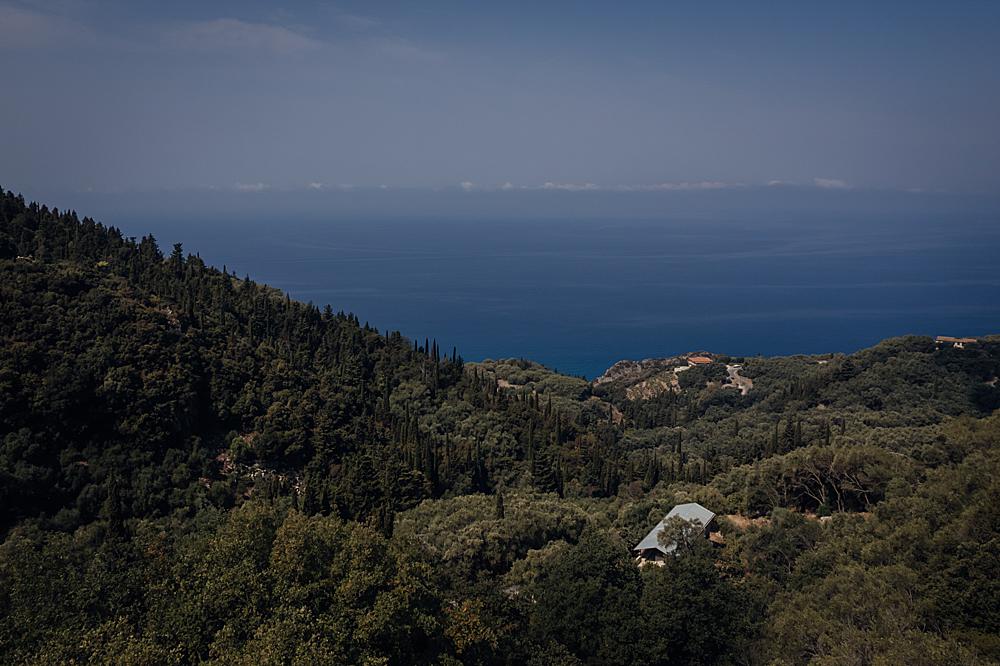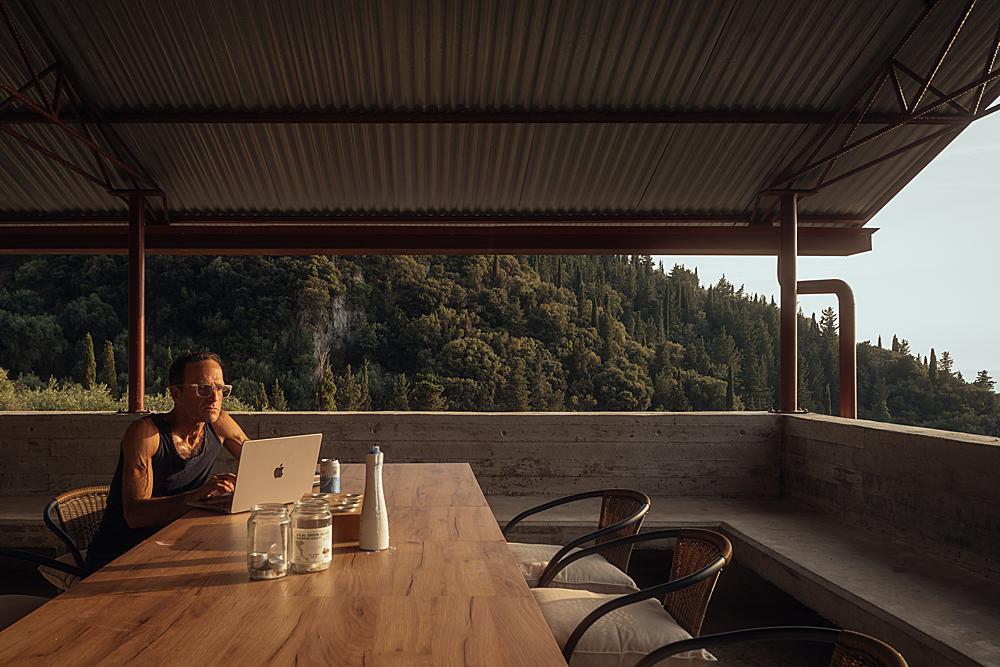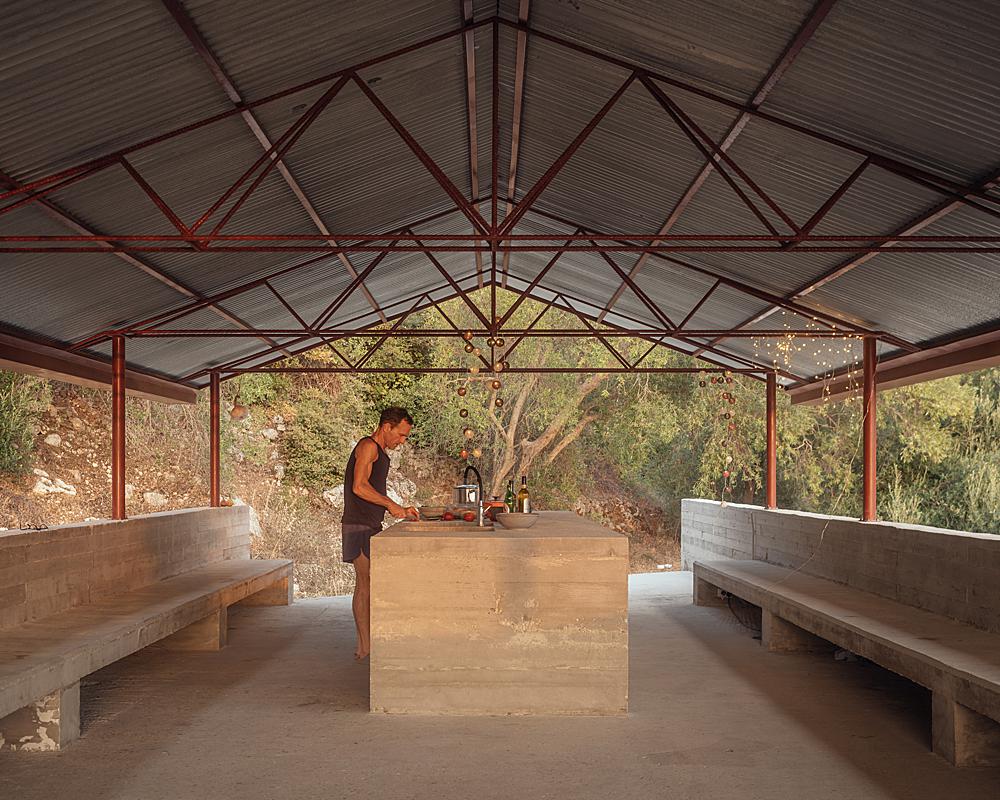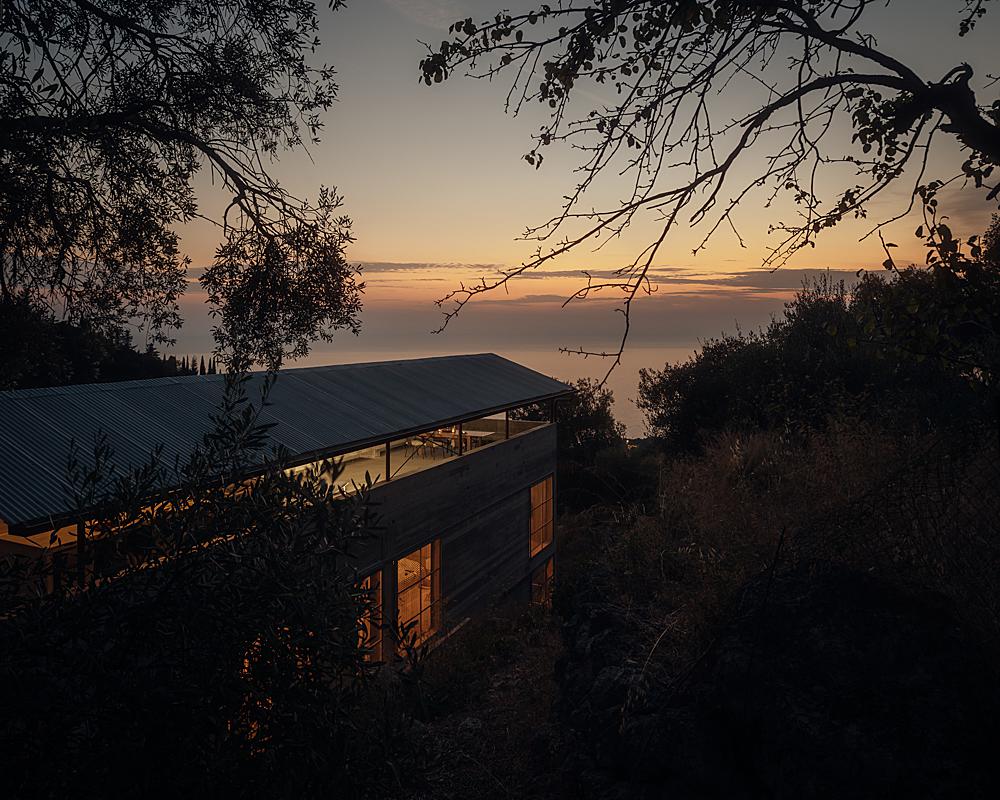Jim Stephenson on “Letting the photos and film unfold themselves” at the House in an Olive Grove
We’re back on Project of the Week with long-time APA friend and favorite Jim Stephenson. Jim’s photographs of the House in an Olive Grove, designed by Invisible Studio, offer a remarkable exploration of architecture through light, texture, and atmosphere and are the quintessential POTW. Located in Corfu, this residence is both a product of its environment and a response to it, and Jim captures this relationship with striking sensitivity. As always, Jim’s photographs evoke a palpable sense of place, drawing attention to the subtle interplay between architecture and the environment. Through his work, Stephenson reveals not just the geometry and design of the house, but also the deeper essence of its surroundings—its weathered textures, shifting light, and ever-changing shadows. Each image is imbued with a tactile quality, as if the viewer could feel the warmth of the sun and the breeze through the olive trees.


In capturing the House in an Olive Grove, Stephenson invites us to consider both the macro and micro aspects of the design. From the expansive, sweeping views of the landscape to the intimate, finely detailed construction, his photographs communicate the thoughtful intentions behind the building’s form and materials. Jim masterfully highlights the home’s seamless integration with the olive grove and its broader Mediterranean context.

Jim introduces us to the project by giving a bit of back story. He says “I mean, it’s a good problem to have in our industry isn’t it – being busy? Booked up well in advance with good projects is just about perfect. You definitely can’t complain. The downside though is that you have to say no to new projects that come in – you can’t do them all. So, when Piers (from Invisible Studio) called to ask about documenting his new work in Corfu my first thought was ‘how the fuck am I going to fit this in?’. To be honest, I didn’t have the time. I had one free weekend coming up that I had earmarked for a couple of lie-ins and football but I’d been talking with Piers about this spot of land he had in Greece for years. I’d been watching the building’s progress on his Instagram and catching updates here and there from him on the phone or when we saw each other. The thought of saying no and (to be completely honest), seeing someone else document it, wasn’t great so the free weekend was taken up with a trip over to Greece. Not exactly a hardship!
I’ve been working with Piers and Invisible Studio for close to a decade now. We’ve made films and photographs on any number of projects from houses to community centres, galleries to long-drop toilets. Piers has become a friend and our days photographing and filming together are punctuated, with long chats about architecture, politics and music. We share similar thoughts about what makes a good building and subsequently, what makes a good photo series or film about it. We in the industry aim to have as many of those kind of clients as possible – ones who make good work and trust you to do the same.
I’d also never been to Corfu, so the thought of heading over for a few days appealed, plus I was able to stay at the house. Photographing in the sunshine during the day, dinner and beers in the taverna in the evening. What’s not to love about that?!”



“We talked a lot about context for these photos and the film; the natural context (olive groves and the hillside) and the built context. The most relevant built context for this project is the small shepherd huts and barns that are dotted all over the island — buildings made without architects. As such, we spent an afternoon driving around the countryside finding the most beautiful (rundown) huts we could. I have a collection of 20-or-so photographs of them now, maybe I’ll make a little Becher / Ruscha inspired ‘zine during my winter break. That was fun. Often on my days photographing and filming I start by walking as far away from the building as I can, whilst still being able to see it, then I work my way in. I think context is incredibly powerful in telling the story of a project. In a landscape like this, doing that is always a highlight,” he continues.


Jim goes on, “Staying in the building I’m documenting is a rare luxury, but can completely change the way I operate when documenting space. It allows even more time to watch the light moving through the building, how it changes from morning to evening. I can work slowly because you have so much more time. In addition to my ‘main’ camera (Nikon Z8 with a variety of shift lenses), I keep a smaller camera with me at all times (an old Fuji XT-2 with a 35mm lens) so I can be ready to react during downtime. I rarely (if ever) make a proper room-by-room plan for photoshoots or do recces in advance – being able to react to light or activity is therefore really important. Essentially I pottered around the project and the landscape for three days with little-to-no specific plan, letting the photos and film unfold themselves based on what I was seeing in that moment. That’s something in an ideal world I’d take into all my work.”

Vignettes like this flesh out the textures and story of the property.

The sun cresting the parapet wall with the integrated bench brings sweeping shadows and spills warm light throughout the scene. Jim captures the perfect mix of peaceful tranquility and a cinematic mood.

Jim’s photographs usher in a nice rhythm of shapes, shadows, and lines that cruise our eyes through the frame!

We feel the breeze, the warmth of the streaming sun, the coolness of the shade — each scene is perfect here!


As we get into the photographs of the home’s surroundings, my jaw keeps dropping. This place feels like magic, and Jim conveys it so well.



Jim’s work extends beyond still photography, with his accompanying film bringing another layer of depth to this stunning project. In motion, the architectural and environmental elements are further brought to life, capturing not just the structure, but the very pulse of the landscape that surrounds it. Both the photographs and the film underscore the harmony between the quiet beauty that emerges between design and nature.
“I love the photos we made, but I’d really like to talk about the film,” Jim says when I ask him about the making of his favorite image from this set.
“This project is pretty unique and I think if you view the photos in isolation they raise as many questions as answers. Why are there no finishes? Why does it look so rough? How did the architect find the land? Why concrete? Where is the glass for the windows? Like I said, I’m really happy with the photos, but we knew a film would be essential to telling the full story of the building and of the place it’s located.
Piers and I have always made films together of Invisible Studio’s work, so it felt natural to collaborate here as well. Piers has a really strong connection to this part of the island, having been visiting since he was a child. He also has an interest in how buildings are put together, not only how they are designed by architects, but how a craftsperson and a builder puts something together on site. The rough concrete, with its formwork on show and handwritten builder’s notes still visible on the walls are as important as any beautiful architect’s drawing. The film was an important place where Piers could discuss this (you’ll have to watch it to learn why there’s no glazing in the windows!).
Piers had already posted quite a lot of images on Invisible Studio’s Instagram of the construction of the house, so I knew that the site was a steeply sloping, rocky terraced olive grove. No clear paths, mown lawns or landscaped stairs, so I knew I’d be doing a lot of walking and low-key rock climbing to get the best vantage points. I don’t use a lot of kit on any of my shoots – I don’t use lights, or trolleys, style, etc etc – and when traveling I try to keep it even lighter. Usually, I would take a slider with me for a film, but I left that a home and worked with a skeleton kit. Tripod and camera, which felt pretty liberating.
As such, the camera doesn’t move in the film. Except for one drone shot, it remains stationary at all times. In film, this is called a ‘locked-off shot’. I really like this way of working – I think there has to be a really good reason to move the camera and it can’t just be that you just got a new slider! The site of this house is incredibly peaceful, and so I wanted the film to reflect this. Piers’ dialogue is sparse to allow for long, static shots of the project and its context. There’s no music either, because the cicadas are bringing all the atmosphere.
In post, I slightly turned up the warmth of the footage and included a number of scenes where you don’t see the building at all. I wanted the film to be reflective, and also to make you feel what it was like to be there, not just show you what the building looks like. I think all my shots (photos or video) are either giving information or atmosphere, and the atmosphere is just as important as the information. It was hot and the cicadas were noisy. The breeze was refreshing and the views were long and beautiful.
One thing I did make sure I packed though was a really good audio recorder (a Sound Devices MixPre III with a Sennheiser shotgun mic and Lom omni stereo mics). I knew that the sound of the cicadas would be important, plus we planned to record a short conversation for a voiceover. This proved invaluable. Good audio is as important as good visuals in a film.”

An enormous thank you to Jim for submitting this lovely project in to us. You can (and should) drool over more of Jim’s work on the web at clickclickjim.com and on Instagram @clickclickjim.
If you have a project you’d like to be considered for Project of the Week, you can submit it here.
